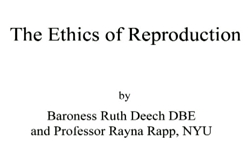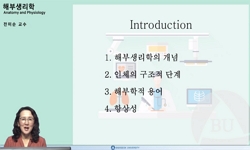상피는 일정한 범위 내의 친족들이 같은 관아에 속하는 관직을 맡지 못하게 하거나 그러한 범위 내의 친족이 당사자인 재판에서 재판관이 되지 못하게 하는 제도로, 그 목적은 친·인척간의 ...
http://chineseinput.net/에서 pinyin(병음)방식으로 중국어를 변환할 수 있습니다.
변환된 중국어를 복사하여 사용하시면 됩니다.
- 中文 을 입력하시려면 zhongwen을 입력하시고 space를누르시면됩니다.
- 北京 을 입력하시려면 beijing을 입력하시고 space를 누르시면 됩니다.
https://www.riss.kr/link?id=A82648653
- 저자
- 발행기관
- 학술지명
- 권호사항
-
발행연도
2011
-
작성언어
-
-
주제어
상피 ; 상피친 ; 부계혈족 ; 모계혈족 ; 인척 ; 복제 ; the Sangpi system ; Sangpi-chin ; paternal blood relative ; maternal blood relative ; relative by marriage ; mourning degrees
-
KDC
300
-
등재정보
KCI등재
-
자료형태
학술저널
- 발행기관 URL
-
수록면
91-119(29쪽)
- 제공처
-
0
상세조회 -
0
다운로드
부가정보
국문 초록 (Abstract)
상피는 일정한 범위 내의 친족들이 같은 관아에 속하는 관직을 맡지 못하게 하거나 그러한 범위 내의 친족이 당사자인 재판에서 재판관이 되지 못하게 하는 제도로, 그 목적은 친·인척간의 결탁으로 인한 비리와 권력 강대화를 방지하고, 공직취임에서의 부정을 방지하는 것이었다고 할 수 있다. 상피하는 대상이 되는 친족을 상피친이라고 하는데, 이 글에서는 상피친의 범위에 관하여 법규정을 중심으로 살펴본다. 상피친의 범위를 분석한 기존의 연구들은 친족을 本宗, 外族, 妻族의 세 집단으로 분류하였다. 이는 법전의 규정체계에 따른 분류법이기는 하지만, 중국의 五服制에서와 같은 용어를 쓰면서도 각각의 집단에 포함되는 친족의 범위가 중국과 달라 어색할 뿐만 아니라, 부계친족과 모계친족을 차별하였다는 결론에 이르게 된다는 문제점이 있다. 이 글에서는 친족을 혈족과 인척으로 분류하고, 혈족을 다시 직계혈족, 쌍방부계 혈족, 일방부계혈족(=일방모계혈족), 쌍방모계혈족으로, 인척을 일방인척과 쌍방인척으로 세분한다. 이러한 분류에 따라 상피친을 분석함으로써, 상피제도에 있어서도 부계혈족과 모계혈족을 차별하지 않았으며, 인척을 혈족에 비해 크게 차별하지 않았다는 결론을 도출한다. 상피친은 모든 관아에서 상피해야 하는 친족과 일부 관아에서만 상피하면 되는 친족으로 구별되기도 하였는데, 혈족인 상피친은 모두 전자에 속하였으며, 인척인 상피친은 전자에 속하는 인척도 있고 후자에 속하는 인척도 있었다. 인척인 상피친을 이와 같이 구별한 것에는 服制가 영향을 미친 것으로 보인다.
다국어 초록 (Multilingual Abstract)
The Sangpi (相避) system prohibited close relatives from working at the same government department. The purpose of this system was to prevent influence of a few families` power and corruption caused by their collusion. The term for relatives who cou...
The Sangpi (相避) system prohibited close relatives from working at the same government department. The purpose of this system was to prevent influence of a few families` power and corruption caused by their collusion. The term for relatives who could not work at the same government department is ``Sangpi-chin (相避親)``. This article focuses on the range of Sangpi-chin. To analyze the range of Sangpi-chin, previous studies classified relatives into three groups - Bonjong (本宗), Oejok (外族), and Cheojok (妻族). Although this classification is in accordance with the then Codes, it still has two problems. One problem is that relatives included in Bonjong are different from those of ancient China though it uses the same term as in ancient China`s classification. The other is its conclusion that the Sangpi system discriminated against maternal blood relatives. This Article classifies relatives into blood relatives and relatives by marriage. Blood relatives are subclassified into lineal group and three non-lineal groups - both-paternal, one-side-paternal (=one-side-maternal) and both-maternal. Relatives by marriage are subclassified into relatives by one marriage and relatives by two marriages. According to this classification, it is verified that neither maternal blood relatives nor paternal blood relatives were discriminated against at all under the Sangpi system. It is also concluded that the Sangpi system discriminated against relatives by marriage and in favor of blood relatives only a little. These conclusions are in accordance with the then conception of relatives. There can be another classification. Sangpi-chin is classified into two groups. One includes all blood relatives who are Sangpi-chin and some relatives by marriage who are Sangpi-chin, while the other includes other relatives by marriage who are Sangpi-chin. Relatives included in the former group could never work at the same government department at all. Those in the latter group could work at the same government department to some extent. Some departments prohibited all Sangpi-chin from working together, while others prohibited only those included in the former group from working together. While all blood relatives are included in the former group, relatives by marriage are classified into two groups. It is assumed that this classification was influenced by mourning degrees.
동일학술지(권/호) 다른 논문
-
이른바 현관예우(現官禮遇),관선변호(官選辯護) 현상에 대한 법적 고찰
- 서울대학교 법학연구소
- 박준 ( Joon Park )
- 2011
- KCI등재
-
- 서울대학교 법학연구소
- 최병조 ( Byoung Jo Choe )
- 2011
- KCI등재
-
법정언어에 관한 인류학적 연구 -국민참여재판에서의 문화적,상호교섭적 측면을 중심으로-
- 서울대학교 법학연구소
- 이재협 ( Jae Hyup Lee )
- 2011
- KCI등재
-
공정거래법 집행자로서의 공정거래위원회의 역할과 과제 -행정입법에 대한 검토를 소재로-
- 서울대학교 법학연구소
- 홍대식 ( Dae Sik Hong )
- 2011
- KCI등재





 KCI
KCI KISS
KISS






